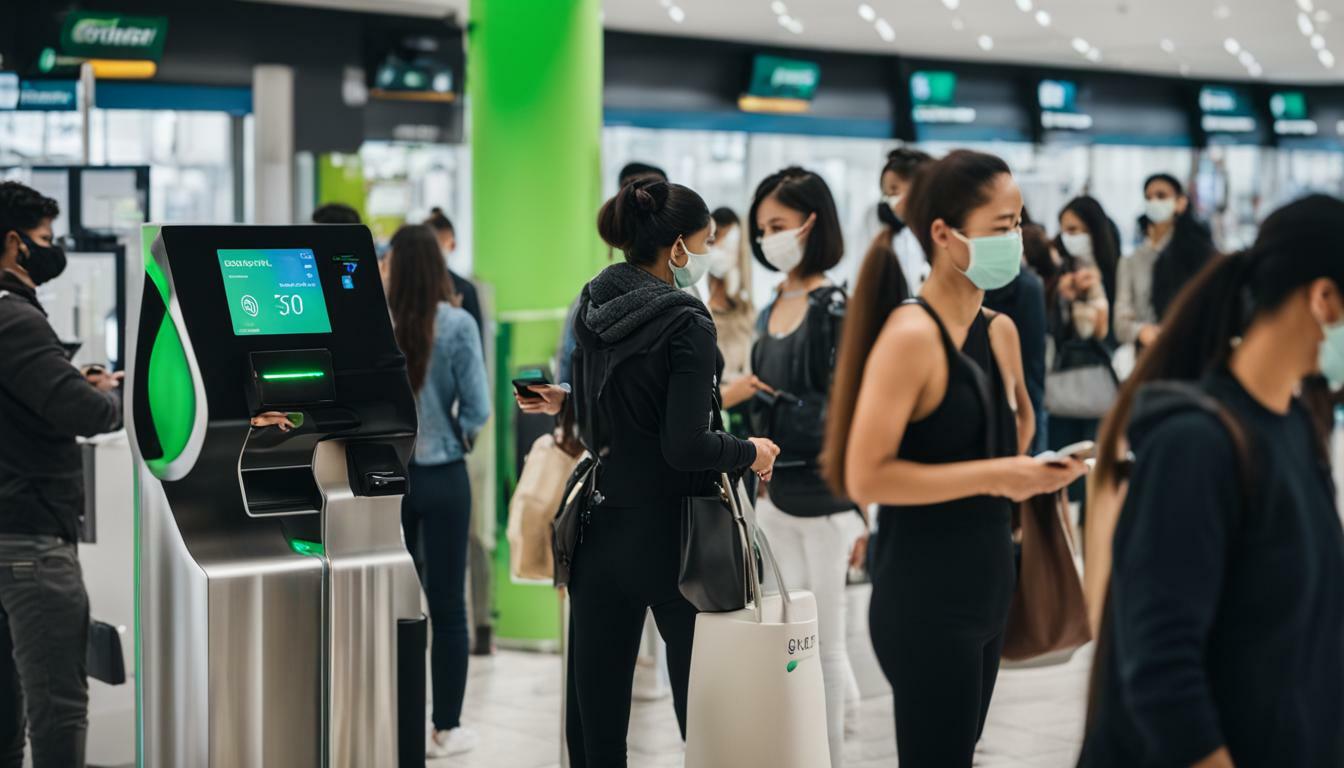The way we pay is changing rapidly, with convenience and speed taking center stage. Contactless payments have become a go-to solution, making transactions faster and easier than ever. This innovation is reshaping how we interact with money in our daily lives.
Whether it’s tapping a card, scanning a phone, or using wearable tech, contactless payments are here to stay. They’re not just convenient—they’re secure and designed for today’s fast-paced world.
In this article, we’ll explore five game-changing types of contactless payments. Each offers unique advantages that could redefine how you handle transactions.
Curious to learn more? Let’s get started!
Key Takeaways:
- Contactless payments offer unparalleled speed, completing transactions in seconds by eliminating the need for PIN entry or physical card handling.
- Mobile wallets and biometric payments enhance security, using encryption, tokenization, and unique identifiers like fingerprints for safer financial transactions.
- Diverse contactless methods, from NFC cards to QR codes, provide flexibility, ensuring accessibility across various devices and platforms.
- The COVID-19 pandemic accelerated adoption, as contactless options reduce physical contact, promoting hygiene and supporting safer payment interactions.
- Despite transaction limits, the convenience of tap-and-go systems makes them ideal for retail, transit, and everyday purchases worldwide.
Table of Contents
What is Contactless Payment?

Contactless payment refers to a secure way to purchase goods or services by tapping a payment device on a compatible terminal. It uses technologies like NFC (Near Field Communication) and RFID (Radio Frequency Identification) for swift, touch-free transactions.
This payment method is often called “tap-and-go” or simply “tap” by banks and retailers. Devices such as credit cards, smartphones, and smartwatches communicate with the terminal through encrypted signals, ensuring safe and reliable transactions.
Contactless payments are widely used in grocery stores, public transport, and restaurants for their convenience and speed. With the rise of biometric authentication and mobile wallets, the technology is continually evolving to meet consumer needs.
How Does Contactless Payment Work?
Contactless payment works by enabling devices like cards, smartphones, and smartwatches to communicate with payment terminals wirelessly. It eliminates the need for physical contact by using secure, short-range communication technologies.
When a user taps or hovers their device near the terminal, encrypted payment data is transmitted instantly. This process takes seconds, providing a fast, seamless, and secure transaction experience for users and businesses alike.
Contactless payment relies on two key technologies: NFC (Near Field Communication) and RFID (Radio-Frequency Identification). These technologies facilitate secure and efficient communication between devices.
NFC (Near Field Communication)
NFC is a wireless communication technology that operates within a range of about 4 centimeters. It ensures secure data exchange by requiring close proximity between the payment device and the terminal.
This technology supports two-way communication, allowing devices to authenticate and complete transactions in real time. Smartphones, smartwatches, and many modern credit cards use NFC for contactless payments.
RFID (Radio-Frequency Identification)
RFID is the older technology that laid the groundwork for contactless payments. It uses radio waves to transmit data between a tag (e.g., a payment card) and a reader (e.g., a terminal).
Unlike NFC, RFID typically supports one-way communication and operates over slightly longer ranges. It is commonly used in access control systems and early contactless payment solutions.
5 Simple Steps for Contactless Payments
Contactless payments make transactions faster and more convenient by eliminating the need for physical cash or card swipes.
Follow these five simple steps to complete a secure and seamless payment experience:
| Step | Description |
|---|---|
| Check for Compatibility | Ensure your device supports contactless payments and has NFC enabled. |
| Activate Payment Method | Link your card or account to a digital wallet or confirm activation with a bank. |
| Hold Close to Terminal | Position your device or card near the contactless terminal. |
| Wait for Confirmation | Look for a beep, checkmark, or light to confirm the payment is successful. |
| Complete Transaction | Finalize by collecting your receipt if needed. |
1. Check for Contactless Compatibility
Ensure your payment device, such as a credit card, smartphone, or smartwatch, supports contactless payments. Look for the contactless symbol on your card or confirm that your device has NFC enabled.
2. Activate Your Payment Method
Set up your preferred payment method by linking your bank account or card to a digital wallet, like Apple Pay or Google Pay. If using a card, verify with your bank that it’s activated for contactless payments.
3. Hold Close to the Terminal
When you’re ready to pay, position your device or card within a few centimeters of the contactless terminal. This close proximity ensures the NFC or RFID technology can establish a secure connection.
4. Wait for Confirmation
The terminal will beep, display a checkmark, or light up to confirm the payment. This process usually takes just a second or two.
5. Complete Your Transaction
Once the payment is confirmed, you’re done! Collect your receipt if needed, and enjoy the convenience of a quick, contact-free transaction.
Contactless Vs. Traditional Payments
Contactless payments have revolutionized the way transactions are conducted, offering speed and convenience like never before.
Here is a comparison of contactless payments versus traditional payment methods to highlight their key differences:
| Aspect | Contactless Payments | Traditional Payment Methods |
|---|---|---|
| Speed | Transactions are completed in seconds with a simple tap. | Takes longer due to card insertion, PIN entry, or cash handling. |
| Convenience | Requires minimal effort; no physical contact or swiping necessary. | Involves physical handling of cards or cash. |
| Security | Uses encryption and tokenization for secure transactions. | Security varies; cash has no protection, cards depend on PINs. |
| Hygiene | No physical contact makes it ideal for reducing germ spread. | Physical handling of cash and card readers increases contact. |
| Acceptance | Widely accepted in urban areas and modern retail environments. | Universally accepted but slower in adoption of digital upgrades. |
| Technology | Relies on NFC or RFID technology for wireless communication. | Uses chip-and-PIN, magstripe, or manual cash counting. |
| Limitations | Subject to transaction limits and requires compatible devices. | Works universally but can be time-consuming and less hygienic. |
History and Evolution of Contactless Payment
Contactless payment has transformed how people transact by offering speed and convenience. Its journey from niche technology to a global standard is fascinating.
Early Beginnings
Contactless payment technology began in the 1990s with early RFID-based systems. These systems were primarily used in public transportation for faster fare payments.
The first contactless credit cards were introduced in the early 2000s, enabling consumers to tap instead of swipe. However, limited merchant adoption and public awareness slowed its initial growth.
Wider Adoption
The 2010s marked a turning point as smartphones integrated NFC technology for mobile payments. Digital wallets like Apple Pay and Google Pay popularized contactless transactions, making them more accessible.
Retailers and banks also began to adopt the technology widely, recognizing its benefits in reducing transaction times. By the late 2010s, contactless payments became standard in many parts of the world.
COVID-19 Acceleration
The COVID-19 pandemic significantly accelerated the adoption of contactless payments. Concerns over hygiene and reducing physical contact led to a surge in demand for touch-free transactions.
Governments and businesses increased transaction limits and promoted contactless options to support safer payment methods. As a result, contactless payment quickly transitioned from a convenience to a necessity in daily life.
5 Types of Contactless Payment
Contactless payment methods are revolutionizing how we handle transactions, making them faster, safer, and more convenient.
Here are five types of contactless payment technologies transforming commerce today:
1. Contactless Payment Cards
Contactless payment cards are equipped with NFC technology for secure, tap-and-go transactions. Users simply tap their card on a terminal, eliminating the need for PIN entry for small purchases.
These cards are widely accepted in retail stores, restaurants, and public transit systems. Their speed and ease of use make them a popular choice for quick payments.
2. Mobile Wallet Payments
Mobile wallets store your card information digitally, enabling payments through smartphones. Popular examples include Apple Pay and Samsung Pay, which use NFC for secure transactions.
They offer added security features like biometric authentication and tokenization. This makes mobile wallets a safer option than carrying physical cards.
3. Google Pay
Google Pay is a widely-used digital wallet that supports contactless payments and online transactions. It integrates seamlessly with Android devices and uses NFC to process payments.
Users can also store loyalty cards, tickets, and boarding passes in the app. Its versatility and user-friendly interface make it a favorite among Android users.
4. QR Codes
QR code payments allow users to scan a unique code to initiate a transaction. This method is common in mobile apps like PayPal and Venmo, especially for peer-to-peer payments.
Merchants generate QR codes that customers scan with their smartphones to complete the payment. This method is simple, accessible, and doesn’t require special hardware.
5. Biometric Payments
Biometric payments use unique physical traits, like fingerprints or facial recognition, to authorize transactions. This cutting-edge technology is gaining traction for its unmatched security.
Users no longer need to carry cards or devices, as their biometrics act as the payment method. It’s particularly appealing for future advancements in wearable technologies and smart devices.
Pros and Cons of Contactless Payment
Contactless payment methods offer convenience and speed, but they also come with certain drawbacks.
Below is a direct comparison of the pros and cons of using contactless payments:
| Aspect | Pros | Cons |
|---|---|---|
| Speed | Transactions are completed within seconds. | Errors can occur if the device or card isn’t properly scanned. |
| Convenience | Eliminates the need for cash or PIN entry for small purchases. | Limited by transaction caps for certain amounts. |
| Security | Uses encryption and tokenization to protect user data. | Risk of theft if the card or device is lost or stolen. |
| Hygiene | Reduces physical contact, ideal in health-conscious times. | Requires compatible terminals, which may not be universal. |
| Accessibility | Works with cards, smartphones, and wearables. | May exclude those without access to modern devices. |
Conclusion
Contactless payments are transforming how we transact, offering unparalleled speed, convenience, and security. From tap-and-go cards to advanced biometric options, these payment methods meet the demands of a fast-paced, tech-savvy world.
Each type of contactless payment brings unique advantages, making them suitable for a variety of scenarios, whether in retail, transportation, or online shopping. By embracing these innovations, businesses and consumers alike can enjoy smoother, more efficient transactions.
As this technology continues to evolve, adopting contactless payments is no longer just an option—it’s a smart move for the future.
Ready to take the next step? Explore how integrating these solutions can enhance your everyday financial interactions.
Stay Ahead of Payment Trends
Our blogs reveal the revolutionary advancements in payment systems you can’t afford to miss. Learn how to implement these innovations to transform your business.
Start exploring today and unlock your competitive edge.
FAQ
How Do Contactless Payments Enhance Customer Experience?
They offer faster transactions, improved convenience, and a seamless checkout process.
What Security Measures are in Place to Protect Contactless Payment Transactions?
Security measures include encryption, tokenization, and biometric verification to prevent fraud.
How Can Businesses Start Implementing Contactless Payment Systems?
Businesses can adopt compatible POS systems, partner with payment providers, and train staff on usage.
What are the Limitations of Contactless Payments for Consumers and Merchants?
Limitations include transaction limits, device compatibility issues, and potential security concerns with lost cards or devices.



